The Fujinon XF18mm F1.4 | About a Perfect World
Note: This review is one of a total of four reviews on the second generation Fujifilm X lenses, namely the XF18 1.4, the XF23 1.4, the XF33 1.4 and the XF56 1.2. Some statements are therefore shortened in some of the articles, as they are dealt with in great detail elsewhere.
Prologue
Actually, this is just another review on the new – watch out its full name – Fujinon XF18mm F1.4 R LM WR. However, the number 1.4 and especially the letters signal quite quickly, that a lot is offered with the new XF18 1.4 – high speed, weather resistance and a linear motor for autofocus, to be precise. Let alone the three aspherical and the one ED glass in a total of 15! elements in 9 groups.

Why do I actually start this review with the name and technical specifications? Furthermore, why do I emphasize this fact so much? Quite simply – because this is what makes this lens so special. We already have an 18mm lens in the Fujifilm X world, the XF18mm F2. Nevertheless, this new one is a very different story – in some ways for better or for worse. Although living in a perfect world may be wonderful at times, it also comes with a loss – a loss of joy and nonchalance toward the imperfect.

With the old XF18mm F2 I have a story. This story is about a bumpy start for both of us and ended in a declaration of love for this lens (among others). After all, this lens also accompanied me for several months of my biggest and most important photo project and was responsible for maybe 90 to 95% of my images there – even though it is perhaps one of the most imperfect and “worst” prime lenses of the whole X system. Nevertheless, I still love this lens – or perhaps because of it. The XF18mm F2 is such a super, super, super versatile lens! (All images below are made with the XF18mm F2)
Now I feel guilty for somehow being unfaithful to that love – because I have fallen for the temptation of the perfect world.
The XF18mm F1.4 R LM WR
No question, the XF18 1.4 is much better suited for a perfect world than the old F2 version. There’s no noisy and noticeably pumping autofocus, no loud chattering of the aperture blades and, in addition, an optical performance that is very much aiming in the direction of perfection. Nope, I’m not talking about the same optical perfection of a Leica APO Summicron-M 35mm/2 asph. Unlike the latter, however, I don’t have to donate a kidney to buy this lens. Rather, I’m talking about optical perfection for us ordinary mortals.
The XF18 1.4 is a very good lens – a damn good one, in fact. So how good is it really?
Mechanical Quality
The mechanical quality is at least on par with the rest of the newer X-series lenses. The workmanship and value are on a very high level, it is weather resistant and built like a tank. All adjustment rings run smoothly and the aperture ring is neither too tight nor too loose. The apertures lock nicely in thirds steps – very comparable with the XF23mm F1.4 and way better than the somehow undefined stops with the aperture ring at the XF16mm F1.4.
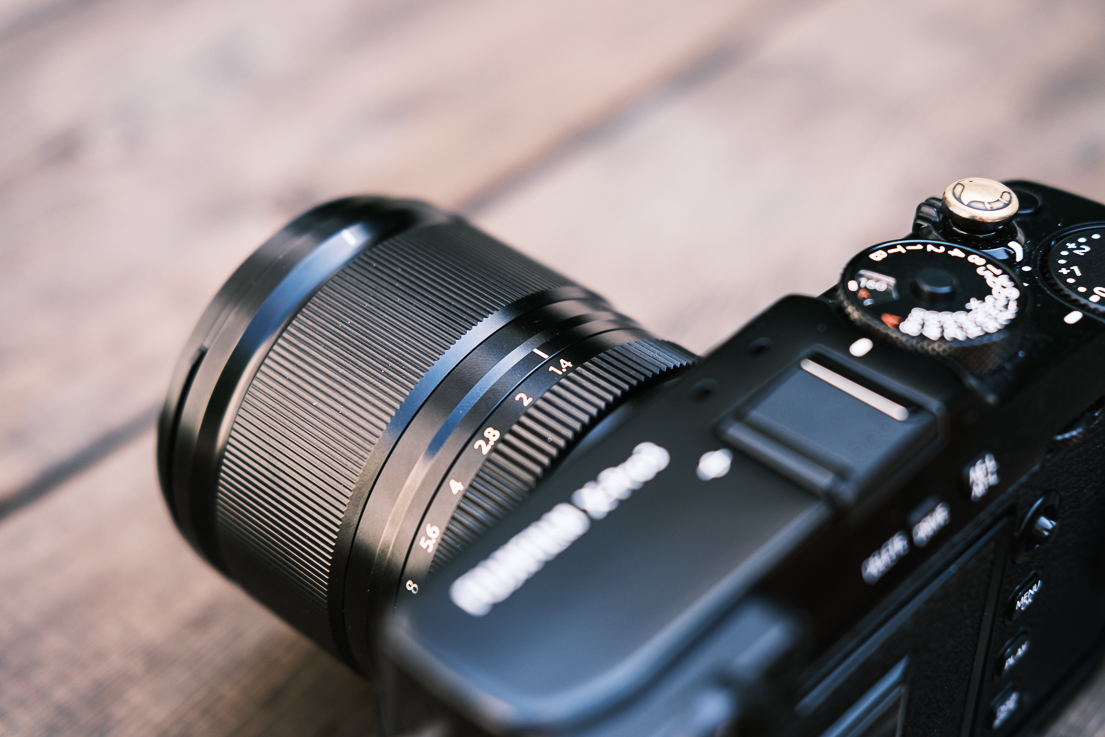
The biggest difference to the other high performance wide-angle lenses of the X series (XF14mm F2.8, XF16mm F1.4 and XF23mm F1.4) is undoubtedly the missing clutch mechanism for manual focusing.
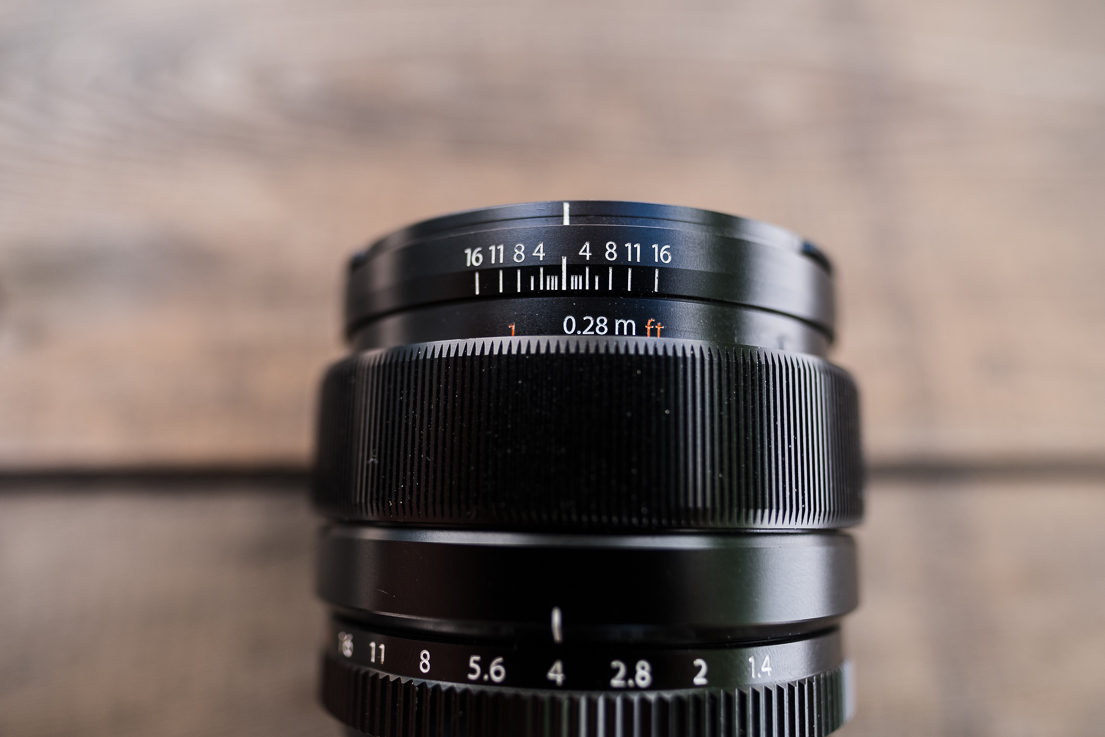
I could imagine that one or the other photographer would sorely miss this feature. I also have to admit that I find this mechanism per se very sexy and super well implemented – but I never use it. Neither do I normally focus manually, nor do I use zone focusing. The accompanying – and undoubtedly very useful – depth-of-field scale, however, I also have in the camera’s viewfinder. Nevertheless, this is a point worth mentioning.
By the way, the optional available metal lens hood LH-XF18 should be included – as it also should be included with the other high performance F1.4 wide angle X-lenses – come on Fujifilm!
Optical Quality
As I indicated above, this is the stage where the music plays with the XF18 1.4.
28mm focal lengths with a maximum aperture of 1:2.8 were already the standard of wide-angle lenses in the 70s and 80s. They were not so complex to construct and comparatively inexpensive – even as a student I could afford such a lens. OK, at least for my Praktica MTL-5B at that time. From time to time, however, special specimens of this kind came along. Maybe some of you still know the legendary Nikkor AI-S 28mm F2.8 – this version with eight elements in eight groups and the closest focusing distance of 20cm. At the time, this was by far the best wide-angle lens I had owned.
We’re looking at something similar with the XF18 1.4. OK, of course it’s an 18mm and not a 28mm, it’s much faster and the construction is even far more complex. What I mean by that is: we are dealing with an optical treat here that is not necessarily like the others in this class of lenses. The XF18mm F1.4 simply stands out from the (admittedly small) crowd.
Not only the speed, but also the size and the much more complex optical design already indicate that the differences between the old F2 version and this lens must be significant. And they are, of course…
The XF18 1.4 doesn’t really allow itself any weaknesses optically. It is an incredibly sharp lens, shows almost no distorsion or chromatic aberrations and thus projects the real world in colour, (micro)contrast and texture sensationally well onto the sensor. The bokeh is excellent as well and less busy than with the XF18mm F2. It is also far less prone to flare (with all its advantages and disadvantages).
Overall, the images just seem clearer somehow, which is certainly due to the sensational resolving power of this lens. The optical superiority of the new lens is already apparent in the center of the image and becomes even more visible towards the edges and corners.
Pixel peeping
I did something for once that I never do…. and I’m almost a little ashamed of that. I took boring pictures of the same subject with these different lenses at the same apertures. To make the difference visible here on the blog as well, I show you below two screenshots of the respective cropped views:

I think you can see the difference very clearly. Almost needless to say, the new version is also much sharper at f/1.4 than the old version at f/2.
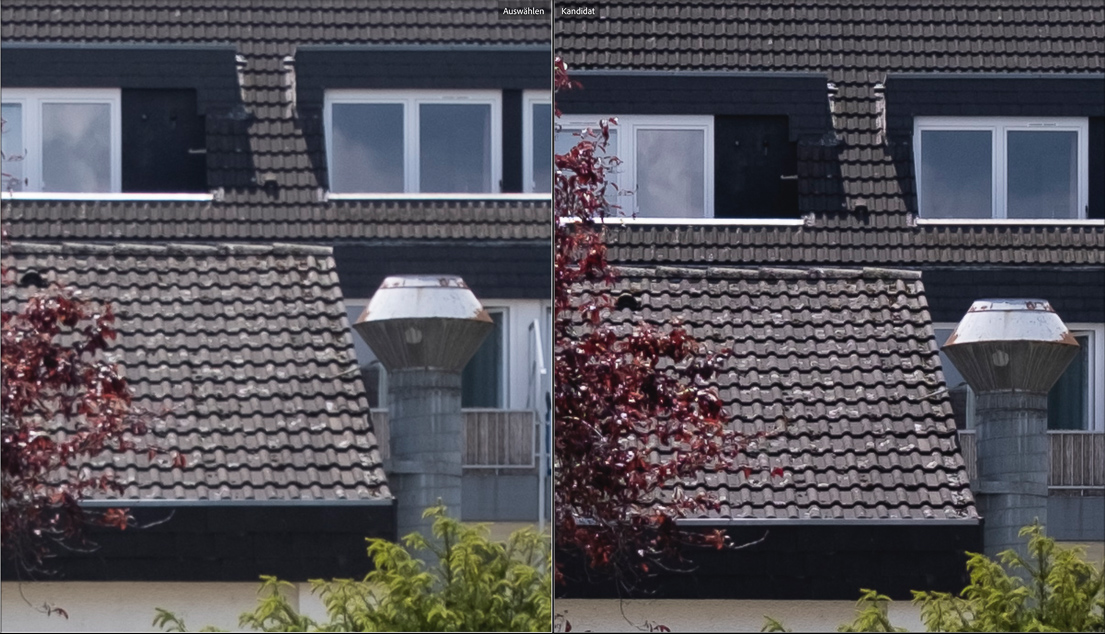
OK, enough of the horrible pixel peeping. You must not forget that you can only see the real difference on large screens or prints when you have the zoomed picture in front of your eyes. Maybe this optical weakness of the F2 is a showstopper for super critical landscape photographers – for me it’ s rather not.
Anyway, if you judge the technical image quality alone (especially resolution), the F1.4 simply blows the old F2 out of the water – no question at all.
Update 28.06.2021:
Since I’ve obviously caused some people to wonder about the difference in resolution compared to the XF18 F2 – even in the centre of the frame – here are a few words of clarification. Yes, of course it’s a very zoomed-in crop because the houses are further away, but it is actually that visible under high magnification.
However, because I found it hard to believe myself, I took a look at the MTF charts (see below) from the Fujifilm website for once. I guess this explains a lot. You can compare it here with the measured values of the F2 version for a better understanding… 😉
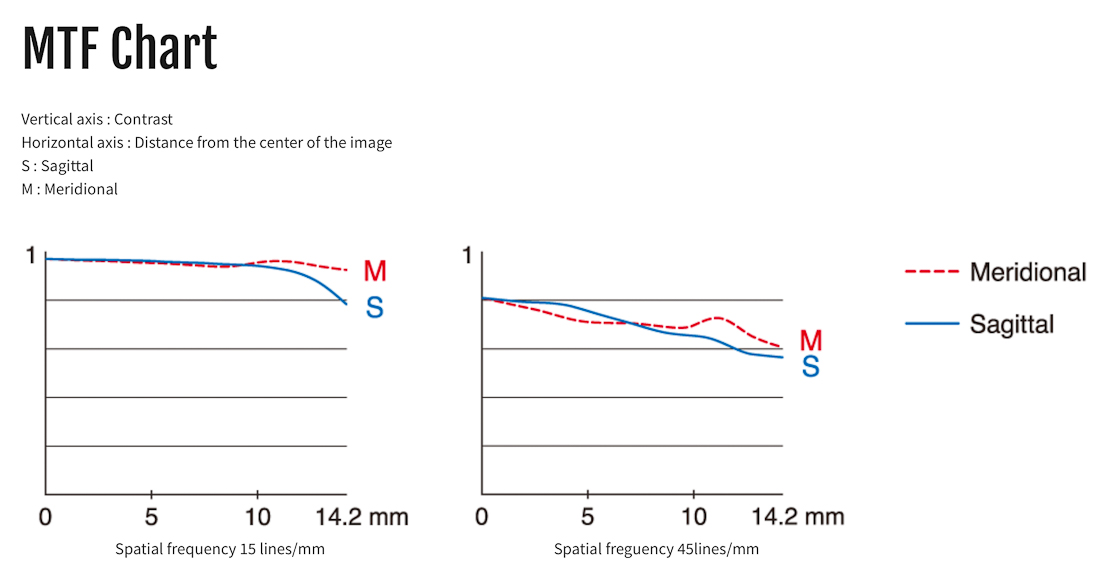
I’m not easily impressed when it comes to sharpness and resolving power because I simply don’t find it that important – but here I’m impressed.
Autofocus
This is a somewhat more complicated point, because here the question of comparison arises very quickly.
So is the AF faster than, for example, with the XF16mm F1.4 or the XF18mm F2? Yes, of course… but not in a way that it would be crucial in real life. Is the AF more precise or less pumping? Yes, in certain respects it is. Especially the AF of the XF18mm F2 is also fast, but it is pumping back and forth. The linear motor on the F1.4 version is super fast and hits focus instantly without any pumping.
Finally, the AF is quieter. Slightly quieter than the XF16mm F1.4 and much quieter than the horrible screeching of the XF18mm F2. That’s essentially what the linear motor does here. Again, we see a feature from a more perfect world.
I would not call it a game changer – but as with the optical quality, AF is pretty much perfect with this lens. For video use, the fast and quiet AF is definitely more than welcome as well.
Usability
The most difficult point of all for me – and I probably won’t be able to answer it definitively for another year or two. There was a good reason why I bought the XF18mm F2 in the middle of my trip for the Europeans project in Poland – even though the XF16mm F1.4 was with me. It was certainly not because of the poor image quality of the 16mm, which is known to be outstanding. It was simply due to its size.
The XF18 1.4 is not a very big or heavy lens. It is somehow comparable with the XF18-55mm in both size and form factor. That‘s not bad, but if I am honest, I hoped it to be smaller. The fast 18mm is a bit on the long side – especially compared to the admittedly very small F2 version.
My style of photography, especially in the streets, becomes so much easier when my equipment is small, light and unobtrusive. Please don‘t get me wrong, I do not photograph secretly, but ask or at least usually search for eye contact. In this very decisive moment, when people’s eyes fall for a second on the camera in your hand for the first time, this often decides a yes or a no to the photo.
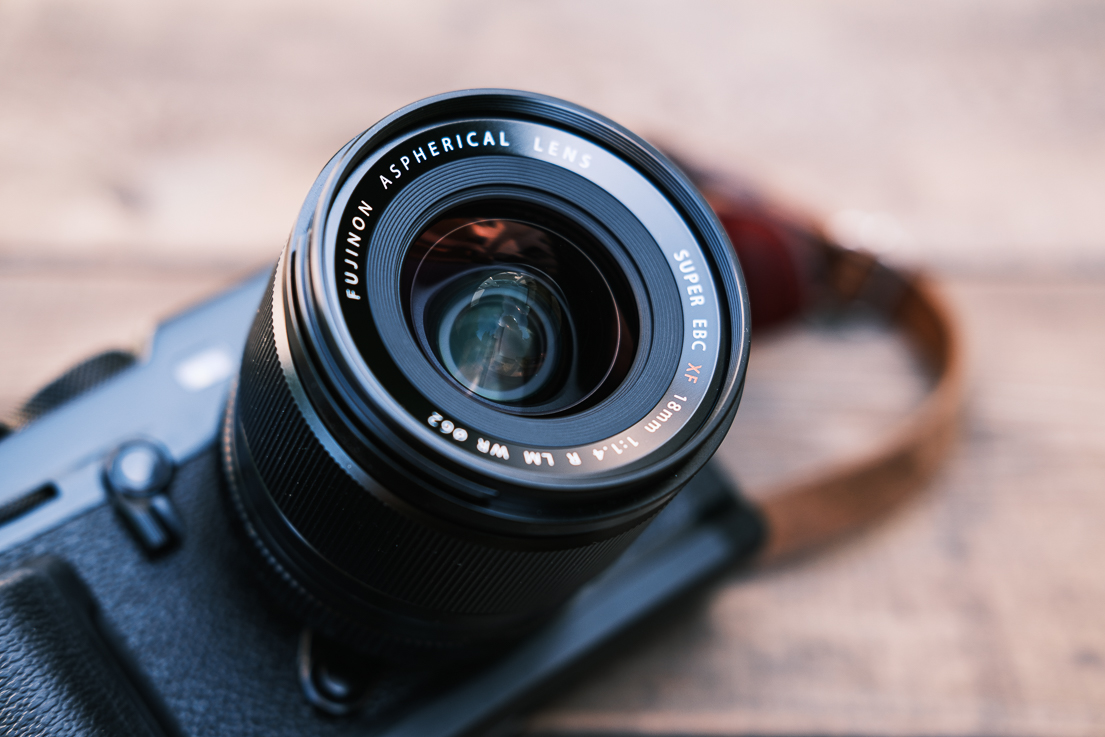
And so, in the end, I can’t say anything definitive about the usability of this lens for me. At least for these cases… in other shooting situations or in moments without (initially strange) people as a subject, the XF18 1.4 is of course a real stunner. Be sure to check out Stefan Finger’s great documentary work in the promotional video for this lens! It’s very inspirational…
Verdict
The XF18 1.4 is an extremely good lens – optically perhaps one of the very best X lenses. It is also a very welcome addition to the fantastic F1.4 (F1.2) family of Fujifilm X lenses. A fast, weatherproof, optically brilliant and as quiet as fast focusing wide-angle lens with an equivalent of 28mm (OK, it’s actually 27mm) is, in my view, one of the most versatile and useful lenses you can put on your camera.

This stunning lens simply does not allow itself any slip-ups – neither optically nor mechanically. It‘s created for a very perfect world. If you need or like this, you have to decide yourself – as I will have to as well.
From a purely emotional and irrational point of view, I am still somewhat ambivalent. In this context, I don’t even want to compare it to the XF18mm F2, but rather to the XF23mm F1.4. The fast 23mm is quite soberly similar to the 35mm F1.4 – both are not perfect in the true sense. But they render the world so dreamlike that I find them both almost more adorable.
I know, critics especially of the XF23mm F1.4 will now interject: This lens is sharp at best in the centre at open aperture. Yes, there is some truth to this, but it doesn’t matter that much for my photography. The overall image, the rendering… are the more important aspects for me.
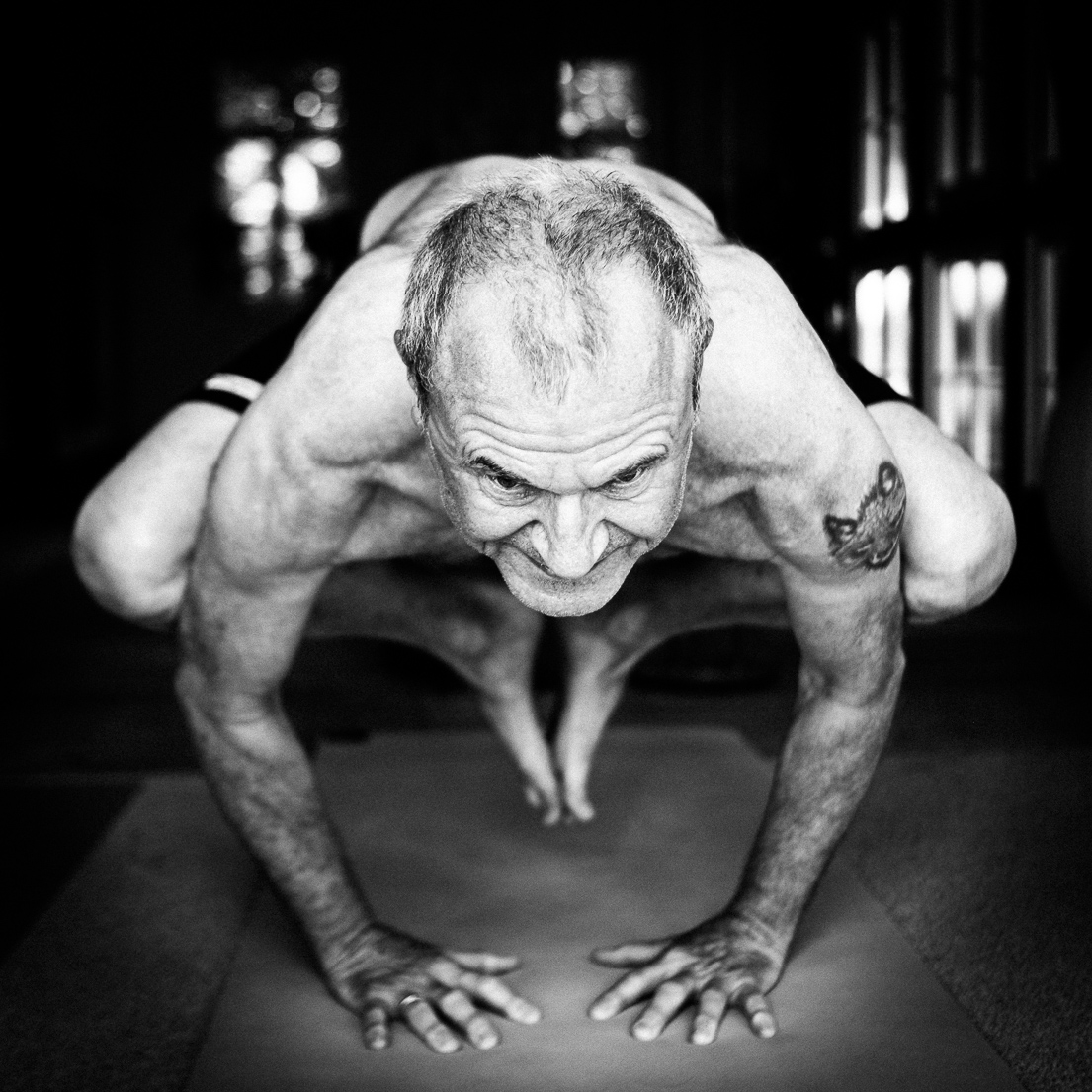
And sometimes – in „nostalgic“ moments – I miss this little imperfection on the new 18mm. Sharpness and rendering are both on an insanely high level here!
Towards the end, I realize how longish this review has become – and how I struggle to just do neutral justice to this lens. That’s a bit funny when I consider the two words that could also be used to describe the XF18 1.4: simply perfect! And I have to admit to myself that I am far more impressed by its perfection than I initially thought….
Exceptional!
In keeping with the theme and title of the post: Just a few shots of a perfect day…. 🙂
There is always light somewhere – go out and shoot!

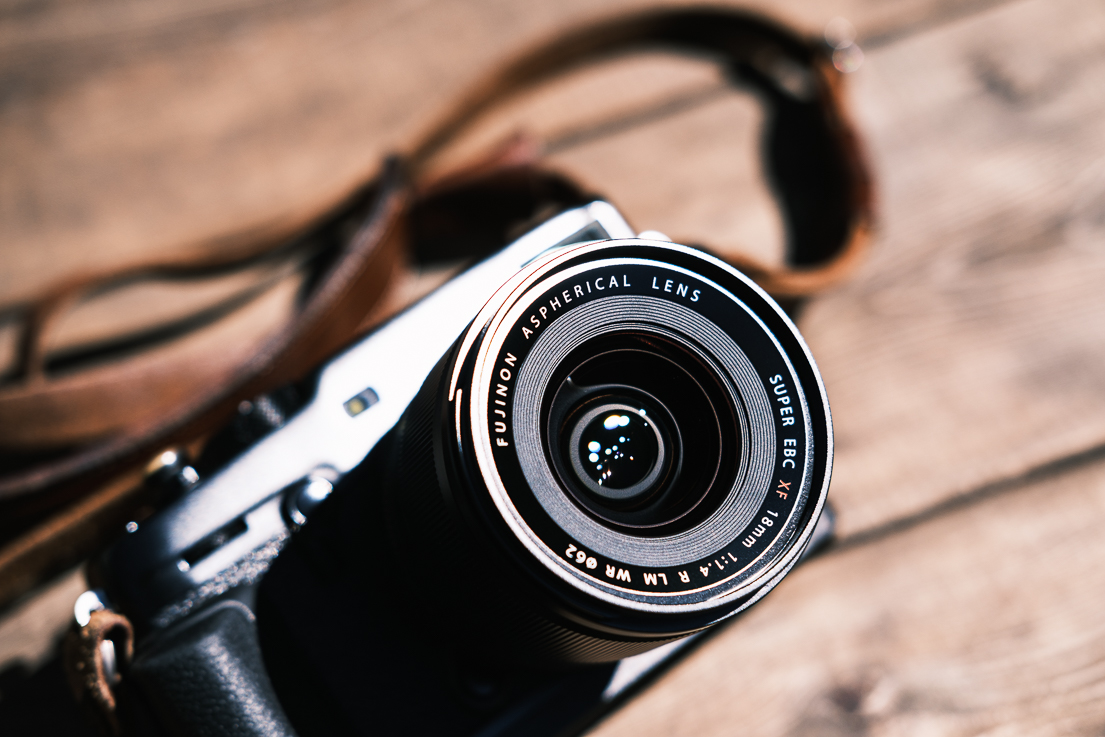



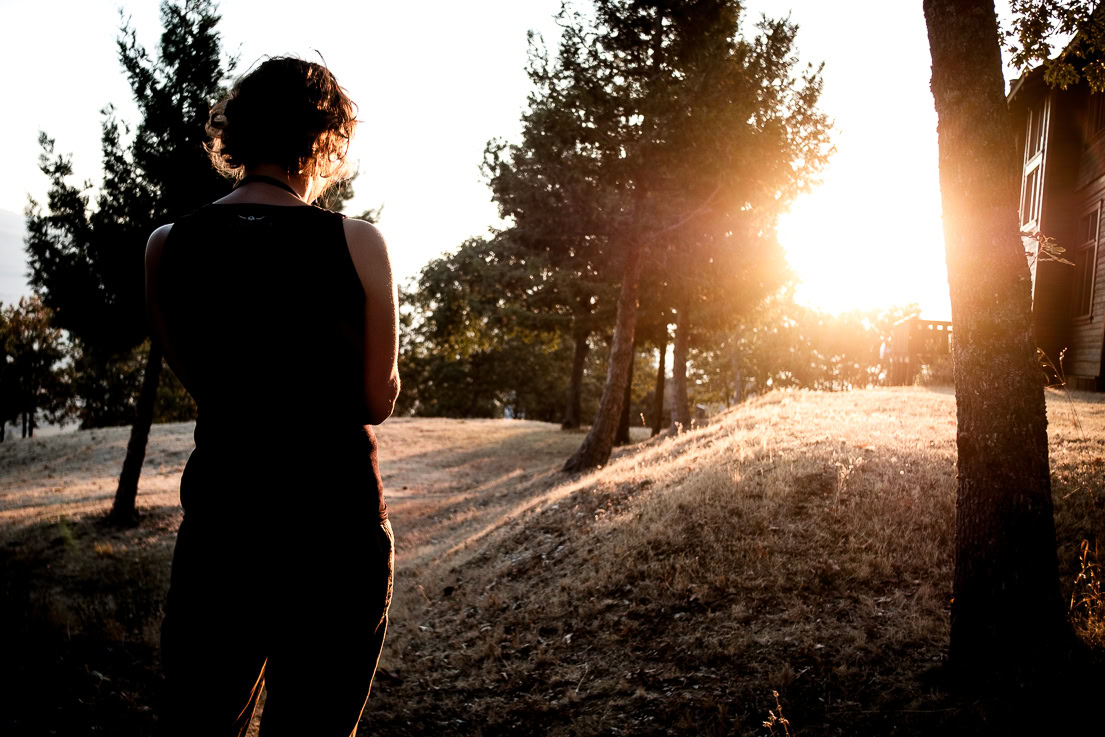








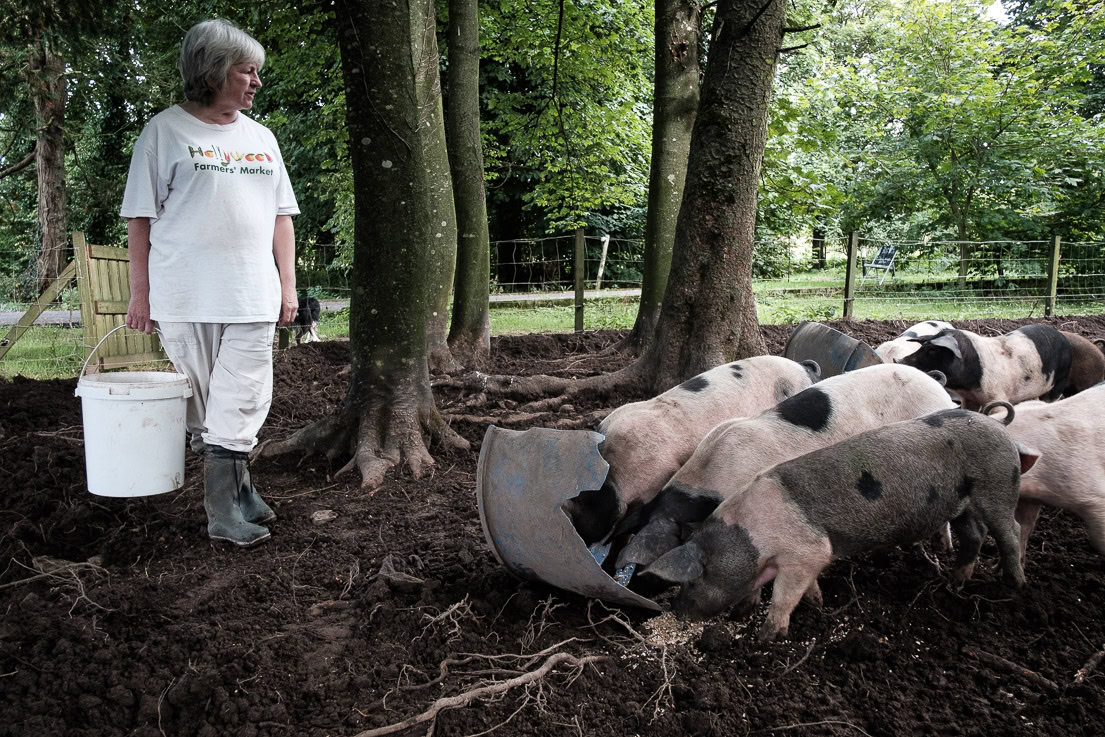





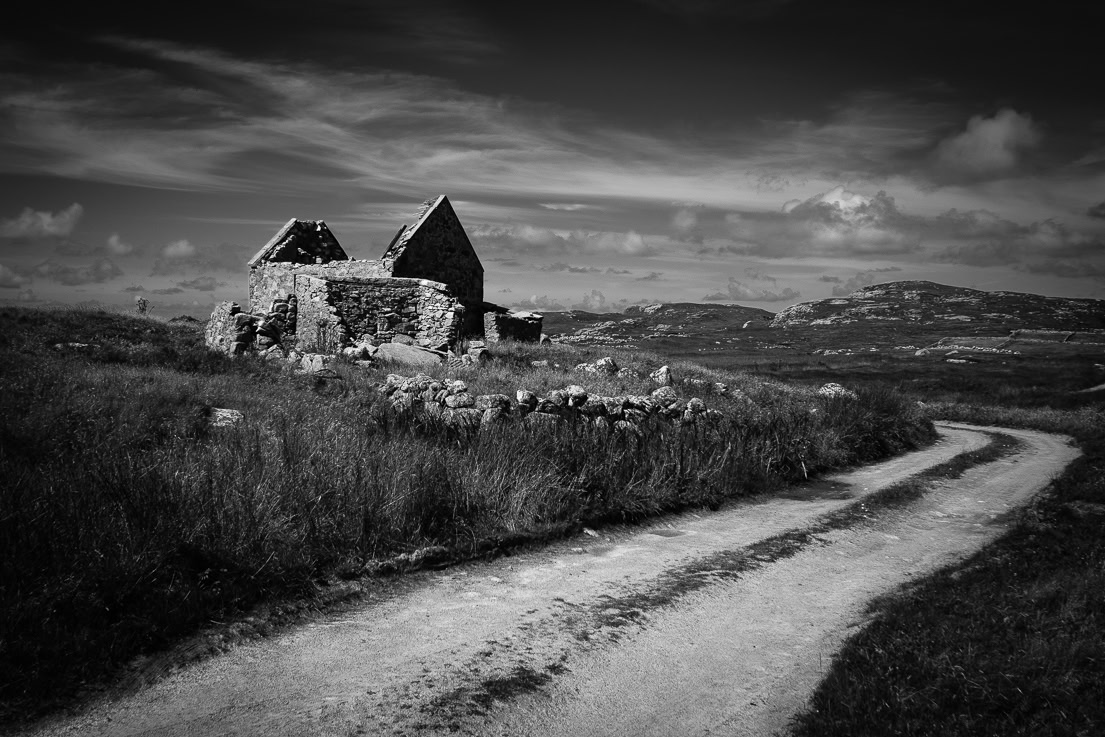


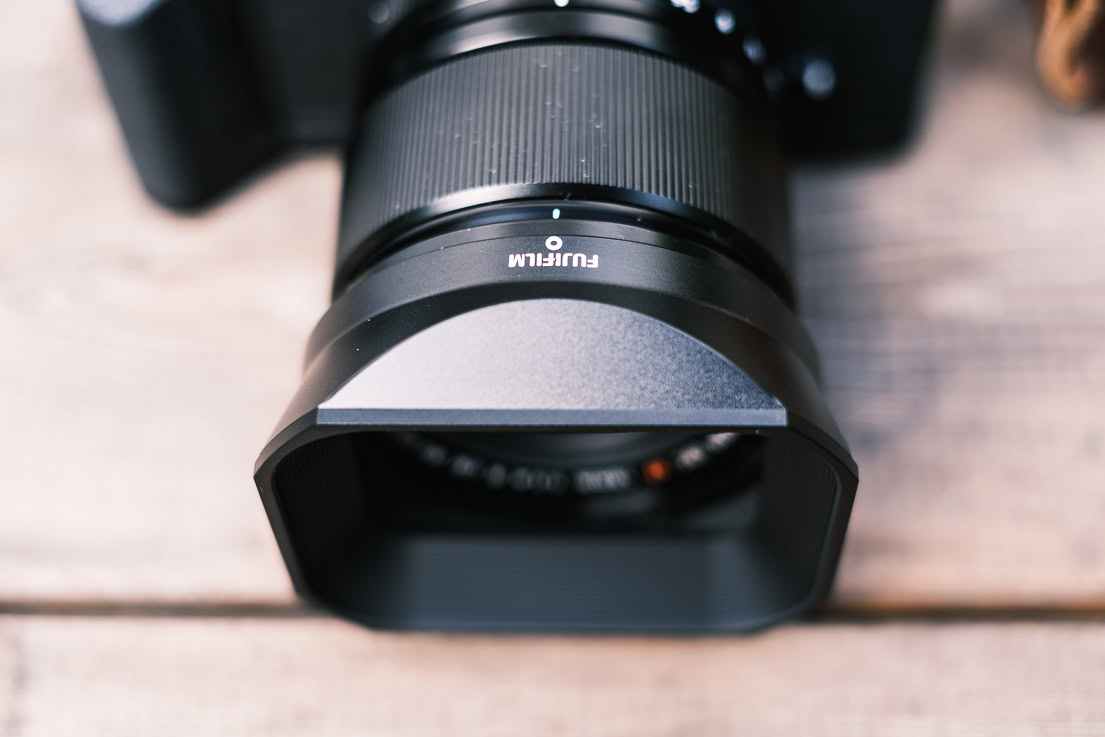





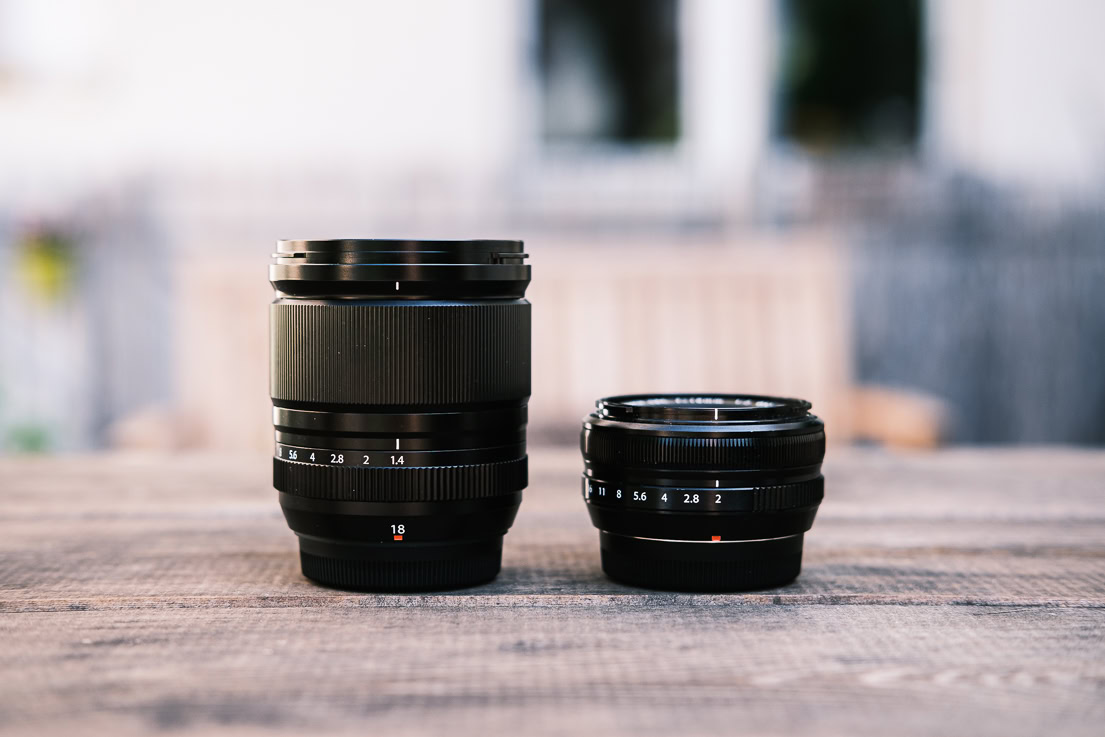
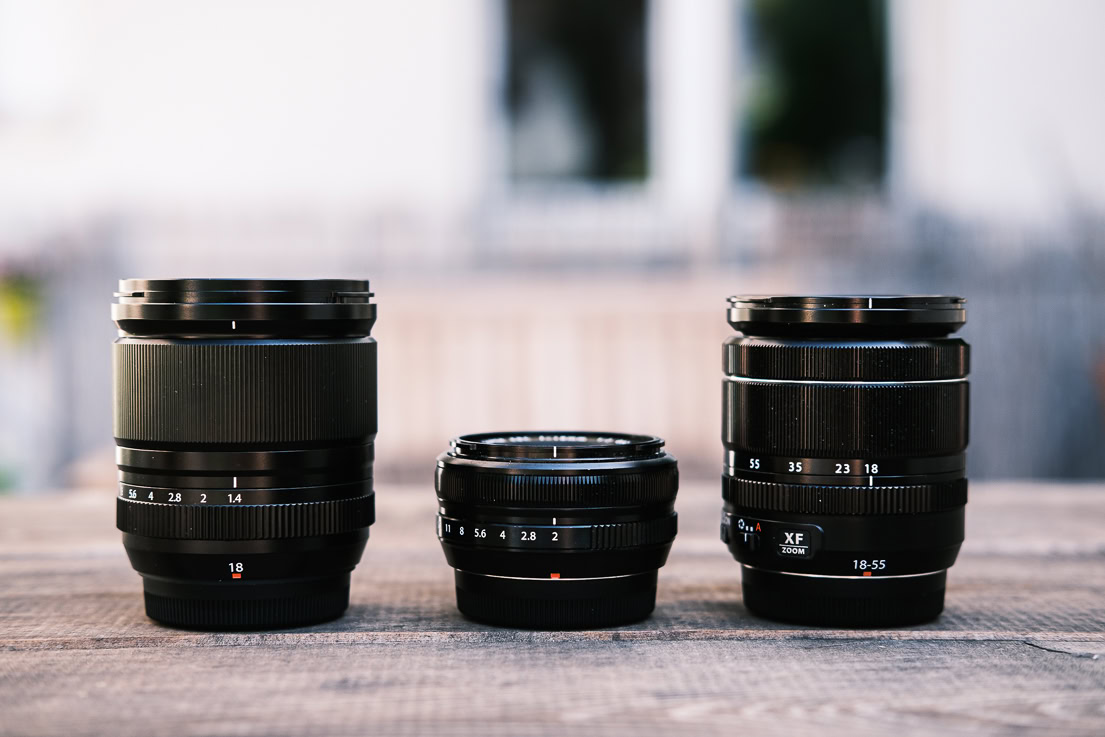








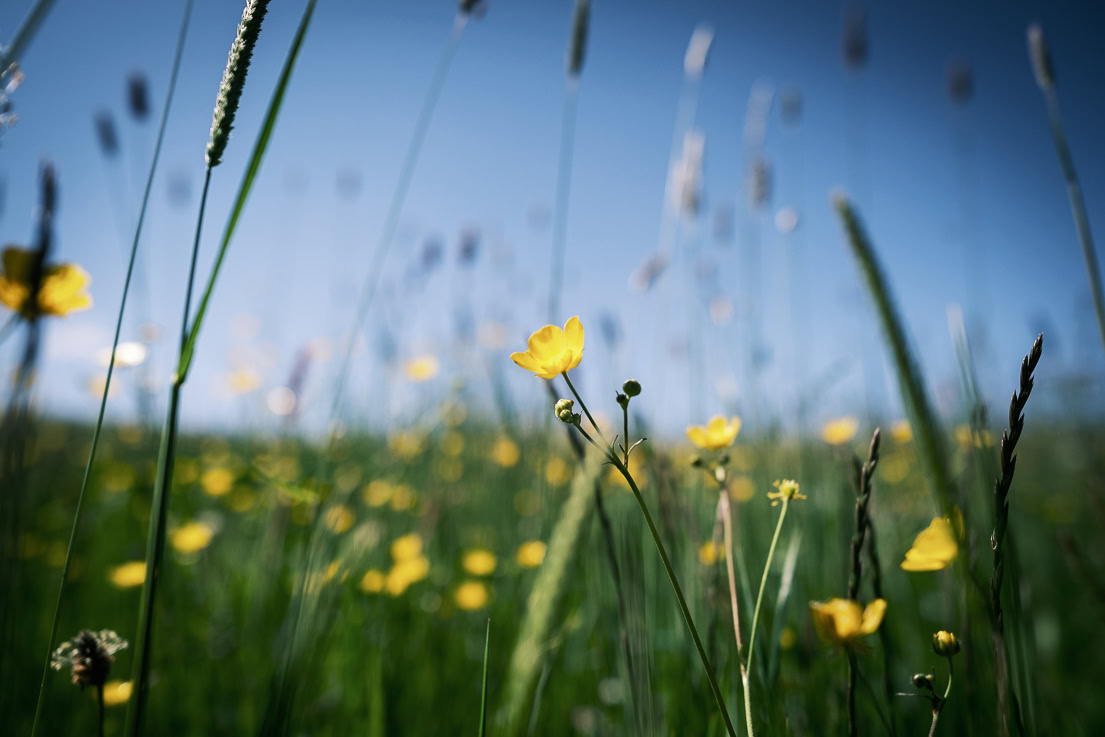

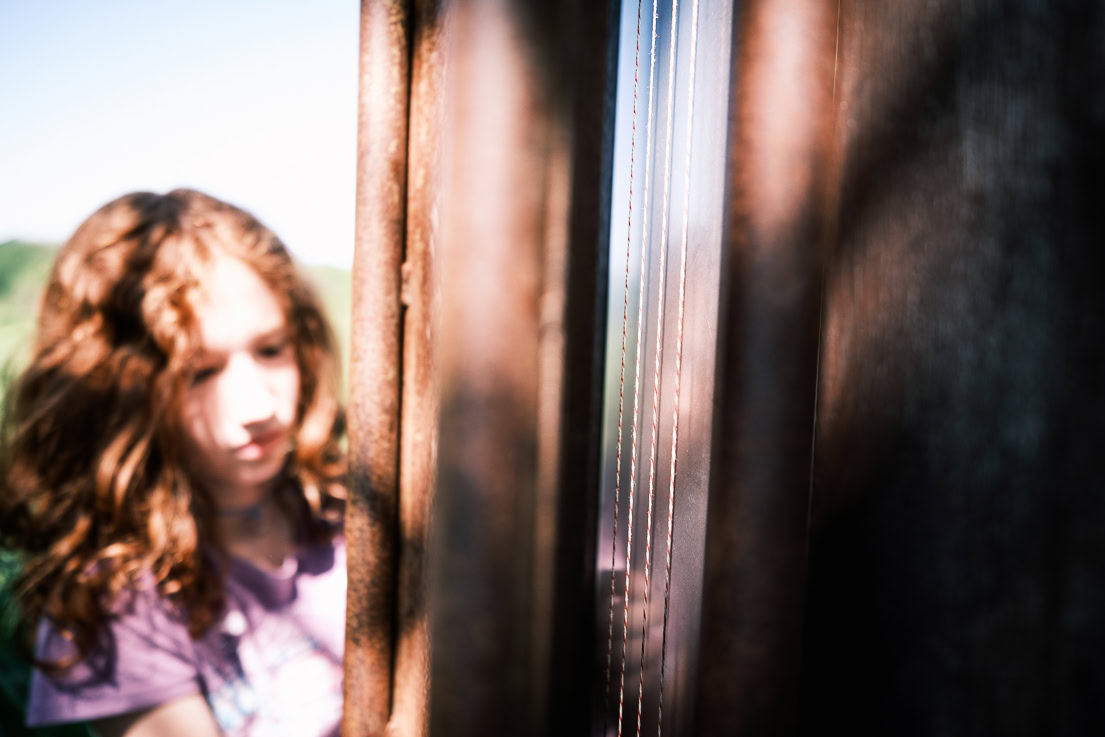











I enjoyed your review, I have the 35mm F2, and the 23mm F2, so the 18 is next….
Hi Lewis,
thanks for stopping by and for your comment! Are you talking about the F2 or the F1.4 as your next purchase?
Regards,
Peter
Again – a well written, personel and nicely illustrated article. Nice job! Enjoyed the reading even if I will not consider buying this lens.
Hi Wolfgang,
thanks for stopping by and for your kind comment!
Cheers,
Peter
Hi Peter, great review, thank you!
One question, do you know if the field of view of this new 18mm 1.4 is exactly the same as the 18mm f2?
I have noticed that the 23mm f2 is a little wider (more like 21mm) than 23mm 1.4, same for 16mm 2.8 (more like 15mm) vs 16mm 1.4.
Hi Juan,
thanks for your kind comment! I have double-checked this for you with my stupid pixel peeping images… the 1.4 version seems to me to be a little bit wider. So rather the opposite of the 23mm and 16mm lenses, and far less pronounced. The FOV is quite similar with both…
Cheers,
Peter
Thank you for your quick response Peter!!
I currently have 18mm f2 and 16mm 1.4 and I was considering either switching both for this new 18 or keep both 18s as I love the f2 because of its size for street photography.
Main issue I have with the 16 is regarding being too wide that I have to bee too close and starts to distort people too much, but technically the lens is great, no complains there.
Juan, I am crazy since I now own all four 16mm and 18mm lenses… and I don’t see them as alternatives, but as different lenses. If you’re also crazy enough, it certainly wouldn’t be wrong to have both 18s… and then maybe rather sell the 16mm if it’s too wide for you. I won’t sell my F2 either and probably use it more often than the F1.4… we’ll see…
I´m a little crazy too then ahahaha, I have 14, 16 and 18 now…. but somehow I wanted to simplify a bit… So I may keep the 14 for really wide stuff and both 18s for documentary/street. Thanks for your inputs and nice blog, I have been reading it since yesterday that I found it.
Sounds like a plan… 😉
Can you compare it with the 28 on the leica q2? Have you ever try that camera?
Since the film era the 28 mm lenght got unusual, only leica and fuji try something new in this field view.
Hi Nicola,
unfortunately I can’t compare it to the 28mm on the Q2 as I don’t own it. I have played around with the Q and the Q2 from time to time, but not worked with it. The Q2 and the 28mm F1.7 are certainly quite excellent. However, I have no doubt that Fujifilm’s XF18mm F1.4 can compete here in practice. The Q2 is full-frame, and that obviously changes the way the images look compared to the 18mm on APS-C…
Cheers,
Peter
Thanks for the fantastic review. Given that one of the big “bonuses” with the 16mm f1.4 was that you could use the very close minimum focusing distance to create interesting portraits or as a faux-macro, did you miss that with the newer 18mm f1.4?
Hi Pulkit,
thanks for stopping by and for the nice comment! Regarding your question: I have owned the 16mm F1.4 for a very long time, and the 18mm F1.4 for a fortnight or so now. So my experience for all different situations is still rather limited. Nevertheless, I think I can comfort you. The difference is not very big – 15cm vs. 20cm minimum focusing distance. If you then take into account the slightly longer focal length, the world looks very similar in terms of separation… I think it’s mathematically a bit less (without having done the math), but in reality it’s probably negligible.
Cheers,
Peter
Thanks a lot for the quick response, Peter. I am quite undecided between the 16mm and 18mm f/1.4 lenses. Given how much the past reviews for the 16mm have painted the close focusing as a positive, I was expecting a large difference with the 18mm (as the 18mm reviews talk a bit about how it does not focus as closely).
Wait, I will make two stupid flower images with both the 16mm and the 18mm at closest possible distance and send it to you via email…
Thanks Peter! Would appreciate that a lot. 🙂
Check your mails 😉
Pulkit,
with your thoughts on usage I would probably go for 16mm after all… have you read this? This is mainly about the focal length 16mm…
Cheers,
Peter
Peter, I have already gone through your past posts and it is the glowing reviews such as the one that you linked to that got me a bit confused – as I had made up my mind earlier to get the 18mm! Oh, the bane of having choice! 🙂
[…] hier ein paar Gedanken zum neuen Star, dem XF18mm F1.4 (English […]
Excellent and original review.
Just one thing : photo montage appears really small on smartphone 😉
Hi Fred,
thanks for stopping by and the nice comment. Regarding the readability on the smartphone: I know that, but I can’t and don’t want to build more than the normal responsiveness for different devices. I see my websites – the images and also the blog – as suitable for larger screens or at least tablets. I know that I might lose a few readers, but that’s something I have to live with. I hope you can understand that.
All the best,
Peter
Addendum: I just looked at this post on my not-large iPhone 12 mini and I feel it is as it should be. I don’t want individual photos in this blog post to be large or boxed. I’m all about the impression, not the individual photo… the images in my galleries are in a Lightbox.
after reading this story i sold my 16mm-1,4 and 23mm 2,0.
I now use this lens mostly on my Xpro3, and for me it’s the
perfect combination of field of view and IQ.
Thank you so much for you’re honest review, and keep up the good work!
Kind regards,
Martien
Hi Martien,
wow, thank you for your nice comment! I’m glad if I could help you with the review in your decision and you are satisfied with the new 18er. It really is a dann good lens…
Take care!
Peter
Hi Peter,
will you continue this blog? Like your reviews 😀
Best regards
Bernhard
Hi Bernhard,
thanks and yes, I will continue this blog in one way or the other. Unfortunately, time is the limiting factor… 😉
All the best,
Peter
fine, so i am waiting for your next posts, dear Peter
Best regards
Bernhard
Hallo Peter,
Vielen Dank für das tolle Review!
Mit welcher Kamera und Filmsimulation bzw. mit welchen Recipe wurden die samples im Sonnenlicht aufgenommen?
Viele Grüße,
Mark
Hallo Mark,
vielen Dank! Was meinst Du mit “samples im Sonnenlicht”? Die Bilder mit Sonne aus dem ersten Block? Die wurden dann wohl alle noch mit der X-Pro2 und einer ziemlich stark angepassten Version von Classic Chrome (in Lightroom) “entwickelt”.
Lg Peter
[…] of course. Its optical weaknesses (often completely unimportant in real-world use) compared to the XF18mm F1.4 simply remain, nothing […]
[…] On the other hand, I am also fascinated by the (technologically) new and a certain tendency towards perfectionism seems to be part of my […]
[…] of the fantastic Fujinon GF medium format lenses. And it’s also significantly better than the XF18mm F1.4, which I consider to be bloody excellent as well. In fact, it’s so outstanding that I’m […]